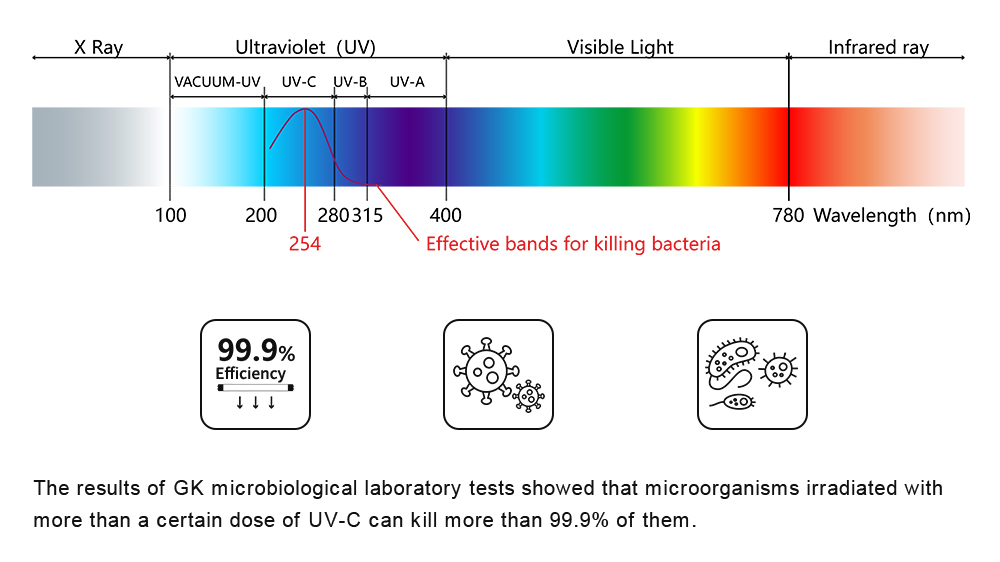UV is a type of electromagnetic radiation, and it is measured in nanometers (nm). It comes from the sun. About 10% of sunlight is UV, but only 3%–4% of UV light makes it through the atmosphere to reach the ground.
Its radiation has wavelengths between 100 and 400 nm, which are shorter than those of visible light but longer than those of x-rays. Based on the different wavelengths of UVA, UVB, and UVC, people fell into three main groups.
But 95% of the UV radiation that reaches the earth is UVA and only 5% is UVB. The sun doesn't send any UVC that can be measured to the surface of the earth. Because DNA is sensitive to different wavelengths, only the UVC region kills germs in a significant way.

And UV light can be broken down even further into four different regions:
100 nm to 200 nm
Far UV or vacuum UV (these wavelengths only propagate in a vacuum)
200 nm to 280 nm
UVC – Shortwave UV, germicidal UV, ionizing radiation at shorter wavelengths, completely absorbed by the ozone layer and atmosphere, useful for disinfection and sensing.
280 nm to 315 nm
UVB – Medium wave UV, mostly absorbed by the ozone layer, useful for curing, and medical applications.
315 nm to 400 nm
UVA - Long wave UV, black light, not absorbed by the ozone layer – useful for printing, curing, lithography, sensing and medical applications
Want to know more about UVC applications, you may check the exact Products.